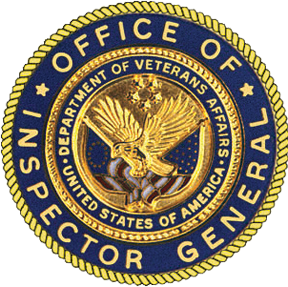Improved Oversight Is Needed to Correct VISN-Identified Deficiencies in Medical Facilities’ Supply Chain Management
Report Information
Summary
The OIG examined whether VA’s regional Veterans Integrated Service Networks (VISNs) were effectively overseeing the supply chain management conducted by their medical facilities. Supply chain management is critical to preventing waste and ensuring unexpired medical products and equipment are available in good condition for patient care when and where they are needed. An audit team assessed data from 140 annual quality control reviews conducted in FY 2023 by the VISNs, in which medical facilities are evaluated on over 100 questions related to VHA requirements. The OIG team also reviewed the resulting corrective action reports. Cumulatively, the VISN supply chiefs’ assessments found that VHA facilities did not comply with supply chain management policy in about 18.5 percent of required areas. The OIG team conducted site visits to six medical facilities from different VISNs to delve further into their quality control reviews. Three of the facilities did not correct 127 of the 130 outstanding deficiencies for all six visited facilities, and the team discovered over 150 expired items that included catheters, syringes, blood collection tubes, and dental implants. The OIG team also learned of instances of delayed or canceled surgeries because supplies were unavailable. Challenges to medical facilities’ complying with supply management requirements included reports of staffing vacancies, leadership turnover, insufficient VISN support, and inadequate storage space. VISN supply chiefs also did not report all noncompliant practices, and Procurement and Logistics Office monitoring was inadequate to identify unimplemented corrective actions or inaccurate assessments. VA concurred with the OIG’s six recommendations to strengthen VISN oversight of facility supply chain management.
Track facilities’ supply chain personnel vacancies as part of the quality control reviews and take appropriate action.
Develop guidelines that define when facility supply chain management problems require additional interventions and then routinely identify them for network director action.
Ensure facility and network directors work with the Procurement and Logistics Office on a plan to identify resources and milestones to resolve identified supply chain management problems for identified facilities.
Direct the program office to develop a process to provide resources when needed to help networks and facilities resolve persistent supply chain management deficiencies, including those identified in this report.
Continue Procurement and Logistics Office efforts to automate tracking that will accurately capture and monitor all quality control review results, corrective action plans, and implementation of those plans.
Update the Procurement and Logistics Office audits of the quality control program to apply risk‑based sampling, evaluate action plan sufficiency and implementation, and use the results to continuously improve quality control review guidance and requirements.
